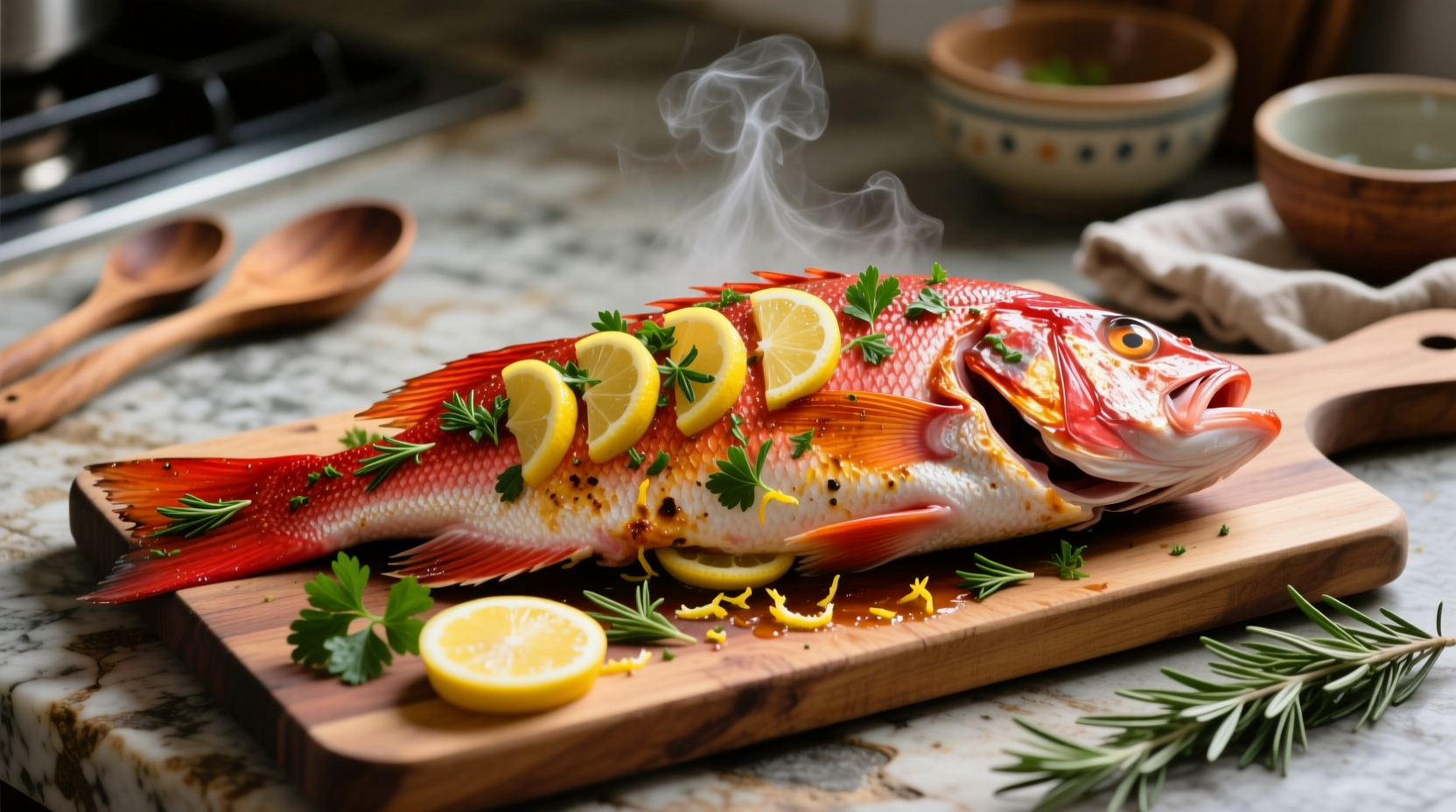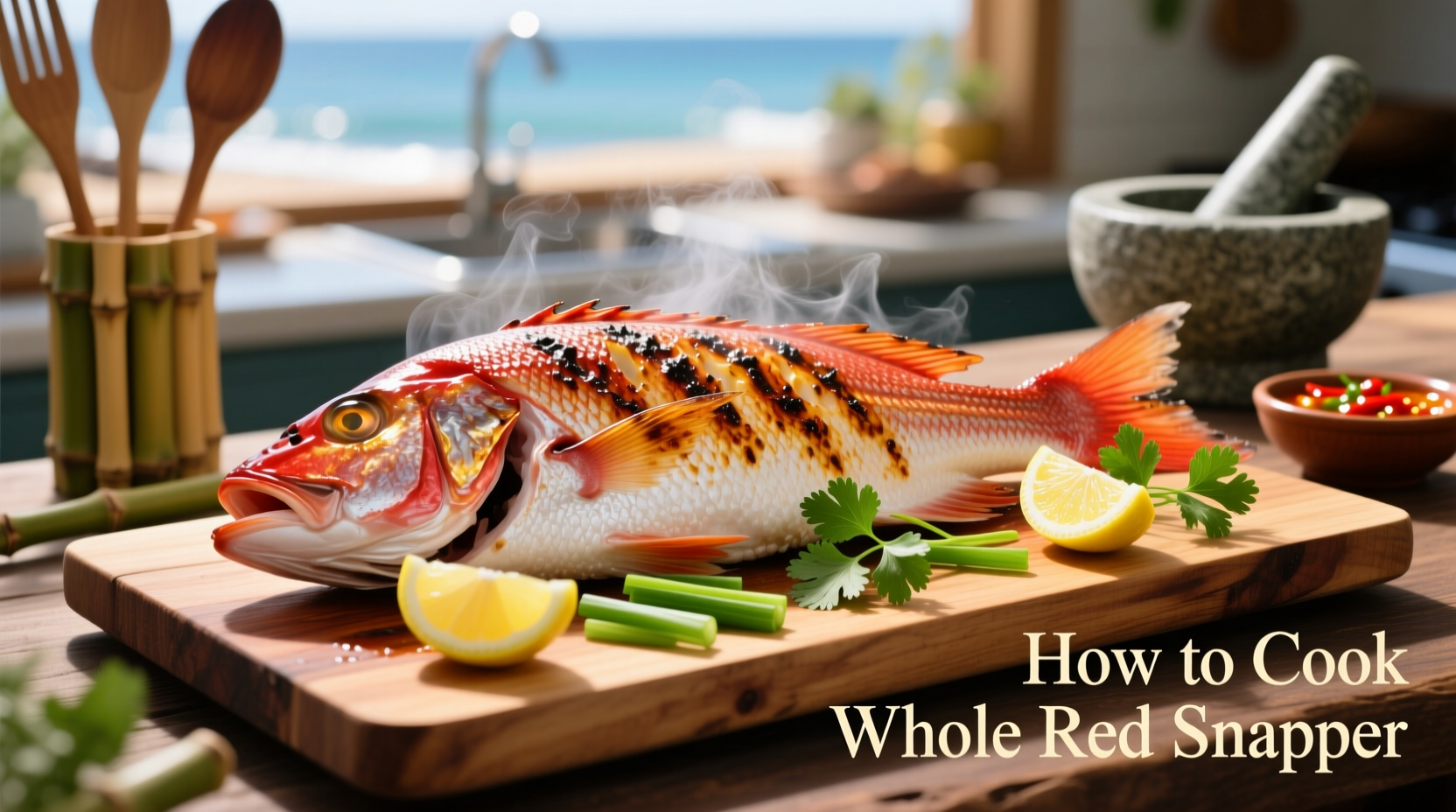Cooking whole red snapper properly transforms this delicate fish into a showstopper meal that impresses guests while preserving maximum flavor and nutrients. Unlike filleting, cooking the fish whole keeps the flesh incredibly moist and adds visual drama to your table. This comprehensive guide reveals professional techniques that guarantee perfect results every time, whether you're roasting, grilling, or steaming your red snapper.
Why Cooking Whole Makes All the Difference
Whole fish cooking isn't just for presentation—it fundamentally improves flavor and texture. The bones insulate the delicate flesh during cooking, preventing overcooking while imparting subtle richness. According to the FDA's seafood guidelines, cooking fish with bones intact helps maintain moisture levels up to 30% better than fillets. The skin also crisps beautifully when properly prepared, creating a delicious textural contrast to the tender meat inside.
Essential Preparation Steps
Proper preparation ensures your red snapper cooks evenly and absorbs flavors effectively:
- Cleaning verification: Confirm your fishmonger has properly cleaned the fish. If not, remove gills and innards, then rinse cavity thoroughly with cold water
- Drying technique: Pat the entire fish extremely dry with paper towels—this critical step ensures perfect searing
- Scoring properly: Make three ½-inch deep diagonal cuts on each side at 45-degree angles. This allows even heat penetration and helps seasoning reach the meat

Seasoning Strategies for Maximum Flavor
Seasoning a whole fish requires different approach than fillets. The cavity provides an internal flavor chamber:
| Seasoning Method | Best For | Preparation Time |
|---|---|---|
| Mediterranean: Lemon slices, garlic, rosemary, olive oil | Oven roasting | 5 minutes |
| Asian: Ginger, scallions, soy sauce, sesame oil | Steaming | 7 minutes |
| Cajun: Paprika, cayenne, thyme, garlic powder | Grilling | 3 minutes |
Season both inside and outside of the fish, rubbing spices gently into the scored areas. For best results, let the seasoned fish rest at room temperature for 15-20 minutes before cooking—this allows flavors to penetrate while bringing the fish to optimal cooking temperature.
Cooking Methods Compared
Oven Roasting (Most Reliable Method)
Preheat oven to 400°F (200°C). Place fish on a parchment-lined baking sheet. Roast 20-25 minutes for a 2-3 pound fish (12-15 minutes per pound). The USDA recommends cooking fish to an internal temperature of 145°F (63°C) measured at the thickest part. The fish is done when flesh flakes easily with a fork and appears opaque throughout.
Grilling (For Smoky Flavor)
Prepare grill for medium-high heat (about 375-400°F). Oil the grates thoroughly. Place fish directly on the grill, skin-side down first. Cook covered for 8-10 minutes per side. For best results, use a fish basket or double grilling racks to prevent sticking. The skin should release naturally when properly cooked—don't force it.
Steaming (Traditional Asian Technique)
Place fish on heatproof platter above simmering water. Steam 12-15 minutes depending on size. The fish is done when the eyes turn opaque white and the flesh separates easily from the bone. This gentle cooking method preserves delicate flavors while keeping the fish incredibly moist.
Doneness Indicators You Can Trust
Forget unreliable timing guidelines—use these visual and tactile cues to determine perfect doneness:
- Eyes: Turn from glossy black to opaque white and bulge slightly
- Flesh texture: Flakes easily with gentle pressure but holds shape
- Internal temperature: 145°F (63°C) at thickest part away from bone
- Skin: Crisps and pulls away from the flesh at edges
Remember that fish continues cooking after removal from heat due to residual heat. Remove your red snapper from the oven or grill when it's just shy of perfect doneness.
Serving Like a Professional
Present your whole red snapper with confidence using these chef-recommended techniques:
- Slide a wide, thin spatula between the top fillet and backbone to serve individual portions
- Remove the center bone by lifting gently once the top fillet is served
- Serve with lemon wedges and fresh herbs like cilantro or parsley
- Pair with light side dishes that won't overpower the delicate fish flavor
Avoid These Common Mistakes
Even experienced cooks make these critical errors when preparing whole fish:
- Skipping the drying step: Moisture prevents proper searing and causes sticking
- Under-seasoning: Whole fish requires more seasoning than fillets to penetrate properly
- Overcrowding the pan: Prevents even cooking and steaming instead of searing
- Moving too soon: Wait until the fish releases naturally from the cooking surface
Storage and Leftover Guidance
Proper storage maintains food safety and quality:
- Refrigerate cooked fish within 2 hours of preparation
- Store in airtight container for up to 2 days
- Reheat gently in oven at 275°F until warmed through—avoid microwave which makes fish rubbery
- Never refreeze previously frozen cooked fish











 浙公网安备
33010002000092号
浙公网安备
33010002000092号 浙B2-20120091-4
浙B2-20120091-4